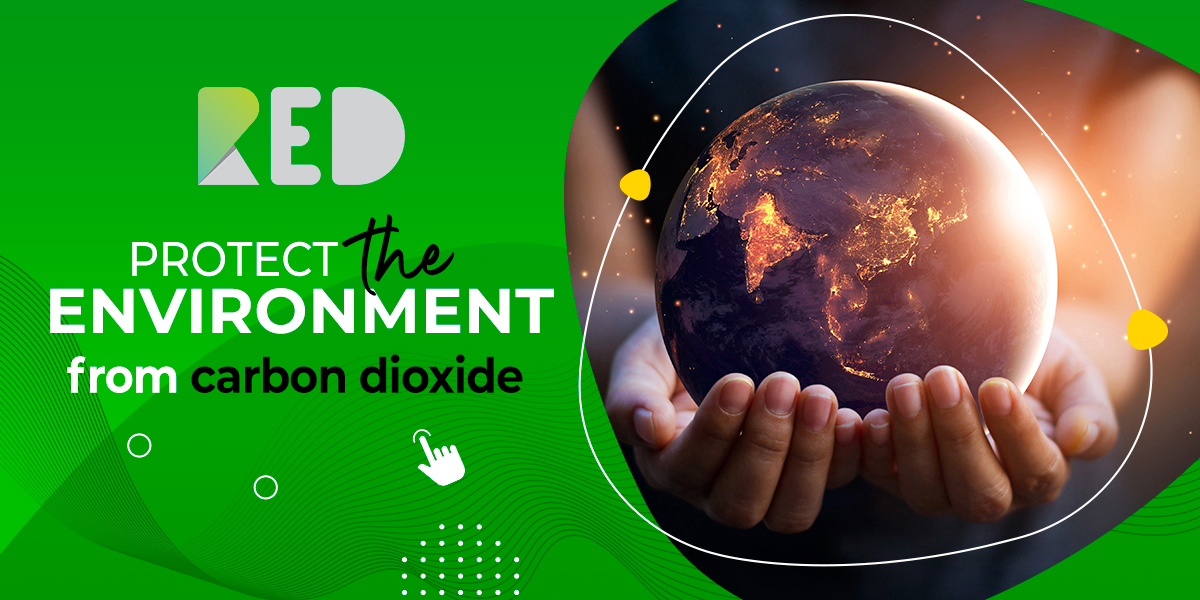Many individuals around the world are suffering because of the devastating effects of climate change. It affects the wildlife and our environment. It also causes environmental pollution. It is all because of the increase in carbon dioxide.
It caused extreme heat waves that killed people in Canada and Pakistan, and wildfires broke out in Greece and Siberia. Very severe flooding has occurred in Germany and China, while a long and extreme drought in Madagascar has pushed 1 million people to the edge of the world’s first “climate change-induced famine.”
There are some ways we can protect our environment from harmful carbon dioxide and pollution:
Forests
Forests play a big part in protecting our environment from harmful gases like carbon dioxide, methane, etc. They release oxygen and absorb the dangerous carbon dioxide. They improve the quality of our water supply and work for the benefit of living organisms. They also store about half of all land-based species, providing a diverse range of life that keeps many natural processes working finely.
However, human activities have destroyed approximately 40% of the world’s forests. Each second, an area the size of a football field is devastated because of carbon dioxide and pollution. The need to protect and restore forests has become fundamental.
Our focus should be on growing more and more trees to make our country free of carbon dioxide’s contagious effects. Only this way can we give surety to protect our homeland.
Farms
The effects of climate change can be felt daily, especially by farmers, but few remedies to this catastrophic threat have been considered. On the other hand, agriculture is a relatively unknown strategy for reducing the number of greenhouse gases trapped in the atmosphere.
Reducing cultivation, increasing crop rotations, growing cover crops, and reintegrating livestock into crop production systems have all been shown to decrease agriculture’s own carbon footprint. While capturing carbon from other industries is also included. This carbon is subsequently transformed into plant material and soil organic matter, producing good soil health and increasing the land’s future ability to generate food.
These methods frequently lower input costs as well. Adopting these schemes may appear to be the obvious decision. That’s why farming is an important source of reduction of carbon emission and protection from environmental pollution.
Bioenergy with carbon capture and storage
BECCS, or bioenergy with carbon capture and storage, is a geoengineering approach that eliminates carbon dioxide from the atmosphere and provides an alternative to fossil fuel energy. BECCS is being considered a way to avoid carbon emissions overshooting, resulting in global temperatures exceeding 2 degrees Celsius.
BECCS methods permanently trap carbon dioxide in geologic formations, whereas a tree only stores carbon throughout its lifetime. According to an IPCC particular study on CCS technology, more than 99% of carbon dioxide stored by geologic sequestration is expected to stay in place for more than 1000 years. While other carbon sinks, such as the ocean, forests, and soil, may face negative feedback loops as temperatures rise, BECCS technology is more likely to provide longer-term stability by storing CO2 in geological formations.
Direct air capture technology
CO2 is extracted directly from the atmosphere using direct air capture (DAC) methods. CO2 can either be permanently stored in deep geological formations (resulting in harmful emissions or carbon removal) or used in food processing or mixed with hydrogen to create synthetic fuels.
Liquid and solid DAC technologies are currently being employed to capture CO2 from the air. Liquid systems remove CO2 by passing air through chemical solutions (such as a hydroxide solution). The device uses high-temperature heat to reintegrate the chemicals into the process while returning the rest of the air to the environment.
Solid DAC technology mostly uses solid sorbent filters that chemically connect with CO2. When heated and held under a vacuum, the filters produce concentrated CO2, which is captured for storage or use.
Carbon mineralization
Carbon mineralization is a new method of removing carbon dioxide (CO2) from the atmosphere and storing it in carbonate minerals like calcite or magnesite.
Mineral carbonation is influenced by available CO2 dissolved in solution, accessible alkalinity in solution, and chemical conditions that promote mineral carbonation.
Carbon mineralization technologies either aim to store CO2 in carbonate minerals (solid storage) or both remove CO2 from the air and store it in carbonate minerals (combined storage – referred to as combined mineral capture and storage).
RED Platform features to overcome climate change
For the purpose to avoid global warming, Restart Energy offers everyone the opportunity to opt for a 100% green energy supply contract. It is assisting the world in preventing hazardous gasses from causing climate change and rapid temperature rise.
Moreover, we thought that in addition to individuals, we could help small and large companies to develop themselves and carry out sustainable activities. That’s why our RED Platform offers benefits to both consumers, producers of energy, and suppliers in terms of GTK and REO-G tokens. Also, from a franchisees’ point of view, they can earn a passive income by the integration of sustainable projects on the platform and can use the corporate carbon footprint calculator for other companies.
If you want to make a sustainable change, take the first step and create an account here: vlec.redplatform-dev.com



